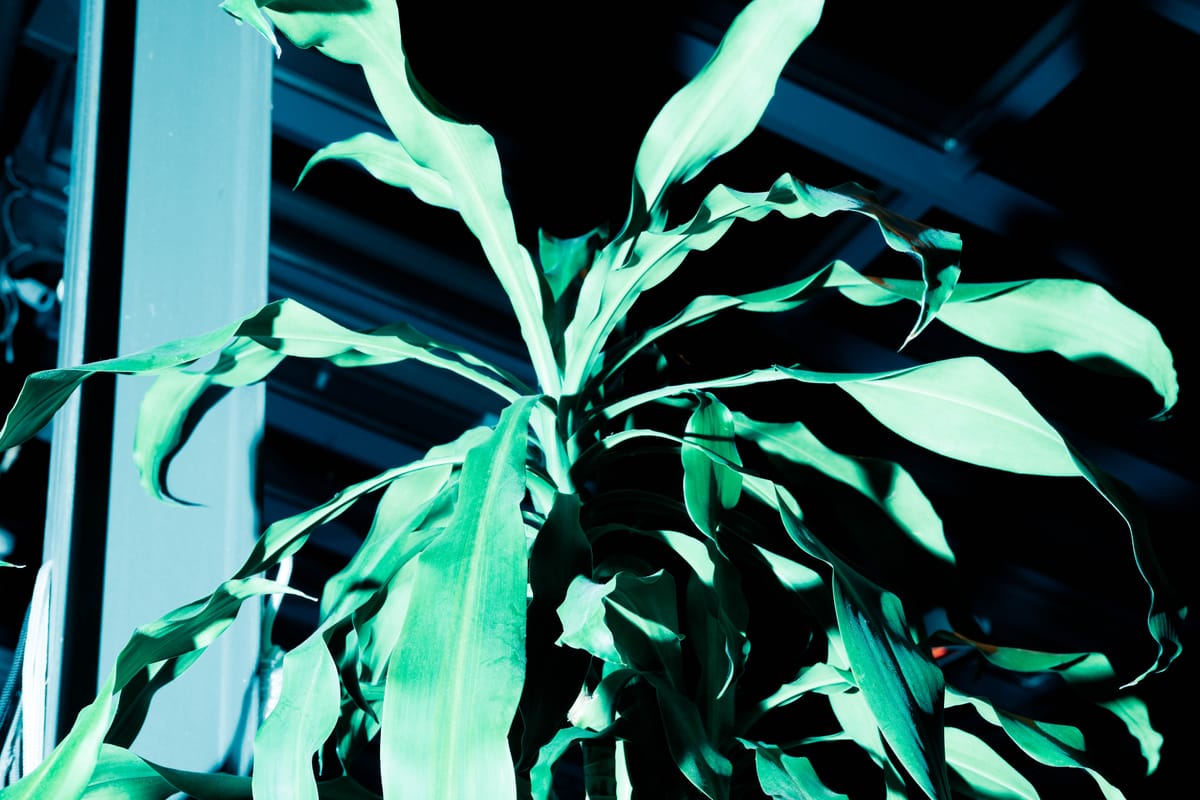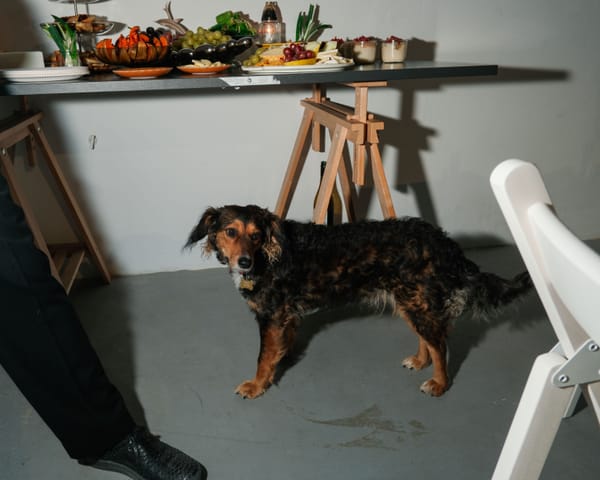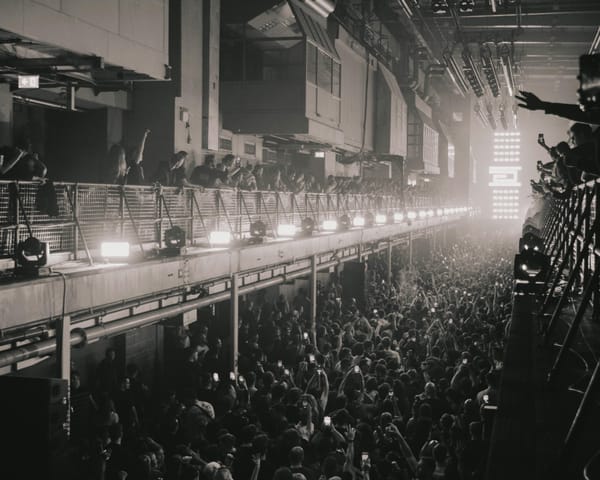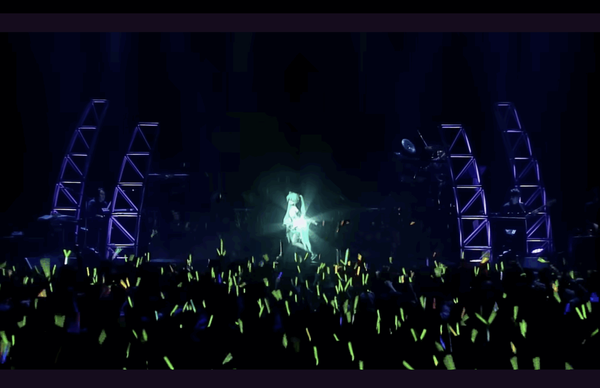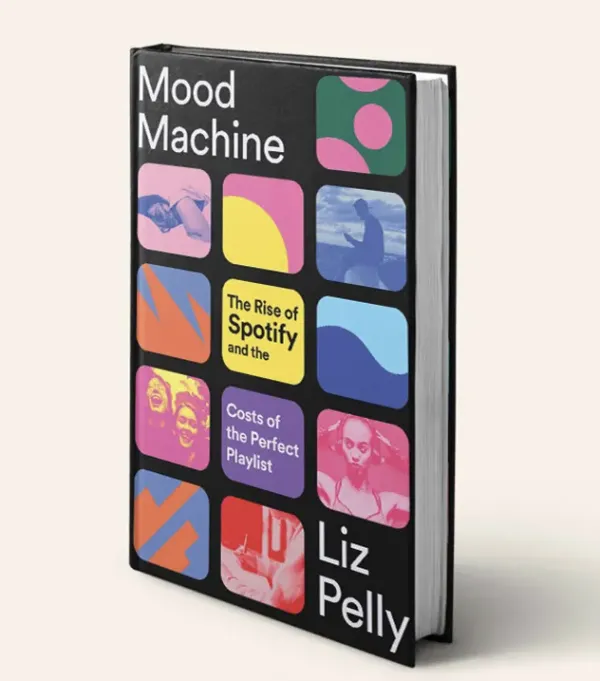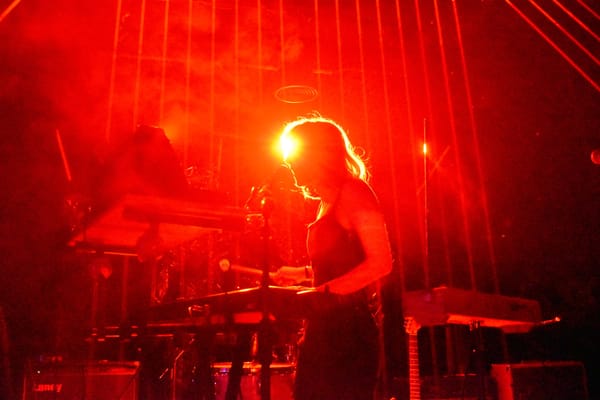Register for free to receive our newsletter, and upgrade if you want to support our work.
We have reported about a couple of events happening in Budapest in late October/early November under the project called Organized Noise. The project is an instance of the Reset! network’s Meet Reset! events dedicated to a specific theme called Reclaiming spaces. The common concept of the series is to reclaim the public space as a site for expression, dialogue, and civic engagement. After a successful implementation of back-to-back events, a dinner (aka feast) and a public concert, we look back on how they turned out and how they came to be.
The initiator of Organized Noise is the Budapest-based PAIKKA collective, whose founder and active member, Sanna Bo defines PAIKKA as “a platform for impermanent collectives of artists and scientists, mostly based in Budapest. The term is broad, but so is what we do. It is always something at the intersection of art and science.”
PAIKKA’s origin lies in connecting creative individuals. “What made me committed to PAIKKA were the ‘retreats’ we used to organize, which were camps for about 20 to 30 people from various countries around specific art and science related topics”, Sanna continues.
PAIKKA is one of many Budapest-based members of Reset!, a network of independent cultural organizations, such as Lahmacun radio, MMN Mag, or 11_11. It matches well with PAIKKA’s mission for connecting and building translocal communities that they had learnt about Reset! at a networking event organized by Jazzaj, a concert series and collective operating mainly in Budapest.
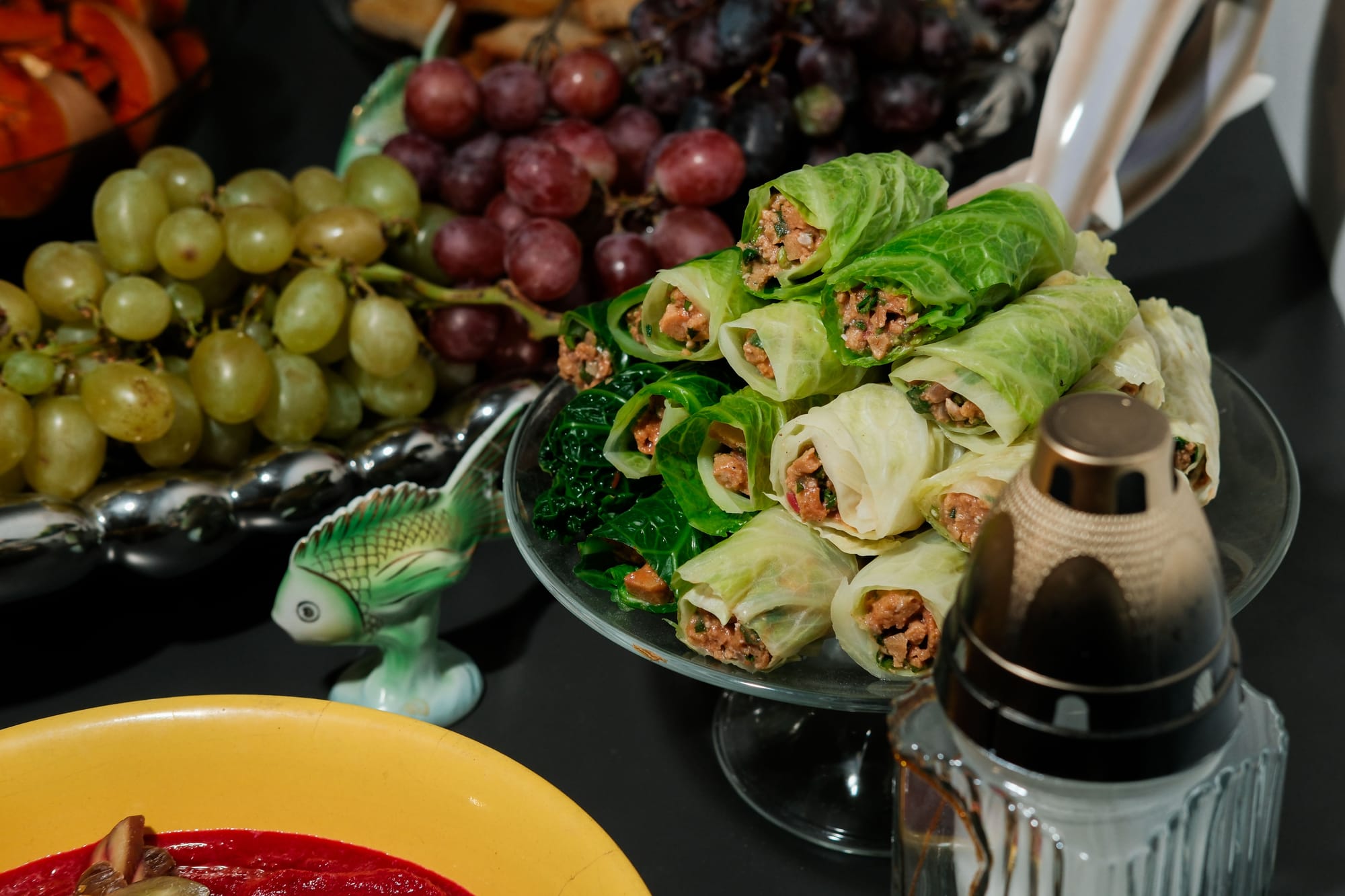
The feast
The first part of Organized Noise was a feast at 11_11 gallery in Budapest, on October 22nd, 2025. The feast was a dinner with invited guests from the Hungarian cultural scene. The idea was to bring together “bubbles” that wouldn’t necessarily meet otherwise, even in a city with a relatively small cultural scene. The reality is that most exchanges take place within bubbles, and even sub bubbles, and actors across these specific and thematic (often sector-defined) boundaries (such as fine art, music, theater, and others) tend not to have a chance to talk professionally.
There seems to be a momentum of civic coordination in the cultural sector, and Organized Noise can be seen as another case. Other noteworthy examples are the (yet informal) Népszínház Vízió that gathers cultural projects in the (outer) 8th district of Budapest (a hot spot of the city for independent culture), or a recent meeting called the Summit of Independents (editor’s translation from Hungarian) organized by the independent art festival OFF-Biennále. Arguably, the perceived increased intensity that goes into active networking of cultural actors may be not completely independent of the current political turmoil present in the country, ahead of the parliamentary election in April 2026, which, in case of a shift in power, projects a complete restructure and rethinking of the local and translocal cultural landscape. So, yes, there is some buzz around the table, but still, I wouldn’t call it optimism, at least not for short term, because nobody can realistically think that even a major political change – which, even if it happens, is expected to be merely a slight shift to the center from very far right – would bring immediate resources to culture amidst a global financial crisis.
The location of the dinner was the 11_11 gallery in the district around Bartók Béla street on the Buda side of the city. For the location for Organized Noise, and especially for a discourse on reclaiming spaces, 11_11 is a sensible choice because the NGO around the gallery is another Reset! member. The organization’s main activity is to act as a proxy between the municipalities and cultural projects, for property utilisation and urban redesign. Beside the active curation of their space at 11_11, the organization had been behind the a rethinking and implementation of cultural activities in the 11th (Bartók-quarter) and the 2nd (Margit-quarter) districts of Budapest, and an ongoing project that studies a possible cultural utilisation of the former vast Dreher beer brewery in the 10th district (Kőbánya).
It is not easy to bring together a diverse set of actors that would still find a common voice so that a constructive exchange can take place. Also, usually the host, who invites or spreads the word, implies a certain configuration of people who are present from the sector. For the dinner of Organized Noise, the organizers took a distributed approach, where each of the four organizations was responsible to invite participants from a sector they are involved in (e.g. MMN Mag invited music-related actors, while Lahmacun radio’s invitees were from the art field). Still, you never know how the dynamics of a networking event is going to be; whether there will be strong cliques, shyness, ego, conflicts of interest, or other factors that can play a decisive role. Luckily, the event on October 22nd at 11_11 gallery had none of that. Maybe it wasn’t that much luck but rather the mutual dependence of cultural actors in desperate times. After the event, contributors expressed the need and desire to continue exchange in a similar format.

The Concert
For the second part of Organized Noise, a performance by Robert Schwarz, Sanna has gone through quite a story with respect to planning and prepping the venue. A story that (unintendedly) matches the needs and challenges of reclaiming spaces perfectly:
“The original idea was to make a public intervention. My overly ambitious plan was to do a noise performance with a group of local artists and organizers at the Music Fountain on Margaret Island. The fountain plays popular music every hour in a highly visited public area of Budapest, and I find it to be a very telling mirror of how culture is treated in the city. It is clearly made to cater to the widest possible public, and it’s afraid to challenge anything.
However, I have this bugging me: why do we only cater to the mainstream and mass tourism? Why do we have so many sculptures of muscular men on horses in public space, while many things that challenge my thoughts or make me giggle in public are considered illegal graffities? Budapest, despite being progressive in certain ways, still operates in a non-democratic and restrictive manner when it comes to supporting art and culture in public spaces.
I know there is a lack of money, but I had many rounds with the municipality and some districts where I offered to bring funding in exchange for permission to use a public space, fully within their conditions, nothing political or extreme. Yet the bureaucratic process is made impossible to comply with, or the idea is rejected for absurd reasons. I genuinely believe, and I see this in other countries, that giving space to non-mainstream art in public really elevates a city on the cultural map.
So, after months of trying to get permission to use the fountain, regardless of the support and help of Főkert Zrt. (the company that runs the fountain itself), I gave up and changed plans without changing the message of the project.”
The concert had been moved to the iconic Széchény thermal bath’s palm house. Sanna’s answer on why the venue has been selected after all the hassles with the Music Fountain is another stereotypical story of how motivated actors in the cultural field need to adapt and accept: “Simply because they hosted us, and it looked like a venue that a high-end event deserves. I had some rounds with a few botanical gardens, but they were so rigid, and I was already exhausted from the battle over the Music Fountain. I googled “palm house,” saw that there is a beautiful one at Széchenyi bath, wrote to them, and they offered the space without much difficulty.”

Fitting with the back and forth of the venue search, the artwork got to be a blend, as Sanna puts it: “The graphics were done by Andrea Görcz, a Budapest-based graphic designer. I sent her the brief when we were still planning to do the concert at the Music Fountain, hence the circles. Later she reworked the visuals to fit the palm house, but we liked the circles so much, and realized they can read as palm trees just as well as circles, so we decided to keep them.”
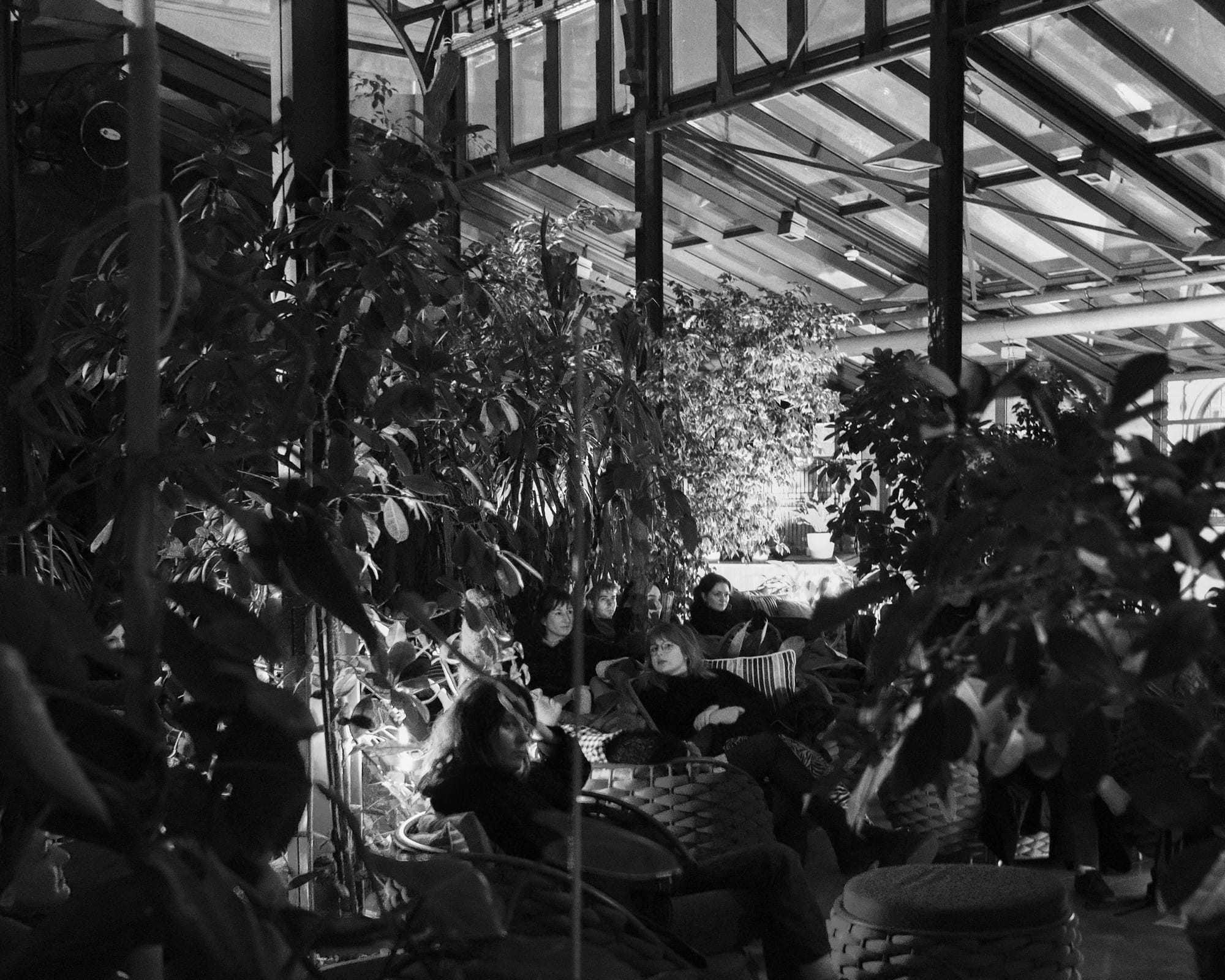
Schwarz performed a version of his Stridulations 1–14 work at Széchenyi bath in a special and intimate setting, within palm trees and in soft and deep seating for the approximately 30 guests who attended. “Since we had funding and could actually pay people for their work, I asked the guys I’ve seen doing sound very dedicatedly at Gólya to manage the sound at our concert, and they did it very professionally (thank you Seprű!). They installed a quadraphonic set-up (four speakers around the listeners, each with a separate input), which was really necessary for presenting Robert’s work. I’ve listened to his album a crazy number of times on different headphones and on my monitors at home, but I could never put my whole body into the waves of it the way we could at the concert.“, Sanna says.
Some insects produce sound by rubbing together certain body parts. This is called stridulation, which became an artistic concept for Schwarz, hence the name of his aforementioned album and performance. Once everyone got upstairs to the palm house, the lights went off, and Schwarz started his set abruptly. The screeches, hums and buzzes of numerous insects filled the room, along with the various frequencies of synthesized noises crafted and arranged by Schwarz, all coming from his computer (the only instrument he used, along with a Faderfox controller). Schwarz remained static most of the time, and leaned over to his laptop screen only occasionally to get a better view on the four output channels he was arranging real-time.
Schwarz’s music works in some way like the structure of an iceberg, or like Lynch’s opening scene in Blue Velvet; the overall impression of Schwarz’s performance may not grab the listener right away, and may depict a collage of noises, where anything can be an organic sound, a synthetic noise, or anything in-between. On a primary level, it may seem erratic, non-threatening, and distant. But once you give enough time for his music to unfold, and enough encouragement for your ear to engage with it in more focused ways, you may find the lively insects and bugs living their wildest lives behind the ‘blue sky, green grass’ façade of nature. Schwarz presents an orchestration of intriguing sounds that all carry something worth listening to. Detailed, rumbling textures are followed by humming, silent sine waves – rich stridulations combined with glossy, digital sonic artifacts. The idiosyncratic pulsations Schwarz performed blended tiny scratches of minuscule agents (bugs or synth modules), that in that very moment, lived their own life, in relation to other agents. The network of these elements granted a concert, where the minute details showed a sonic realm that could very well captivate the ears of the patient, attentive listener.
One can argue that the performance was somewhat hectic, too alien-sounding, and that its highs and lows even out to a not-so-captivating constant. One may also feel that the approx. 30 min. live set was nothing but a glimpse, unable to grant a proper listening experience. The trick however, is to let our ears open up for another way of listening, to something that is neither the Oliverosian deep listening experience, nor the Eno-like ambient school of background music.
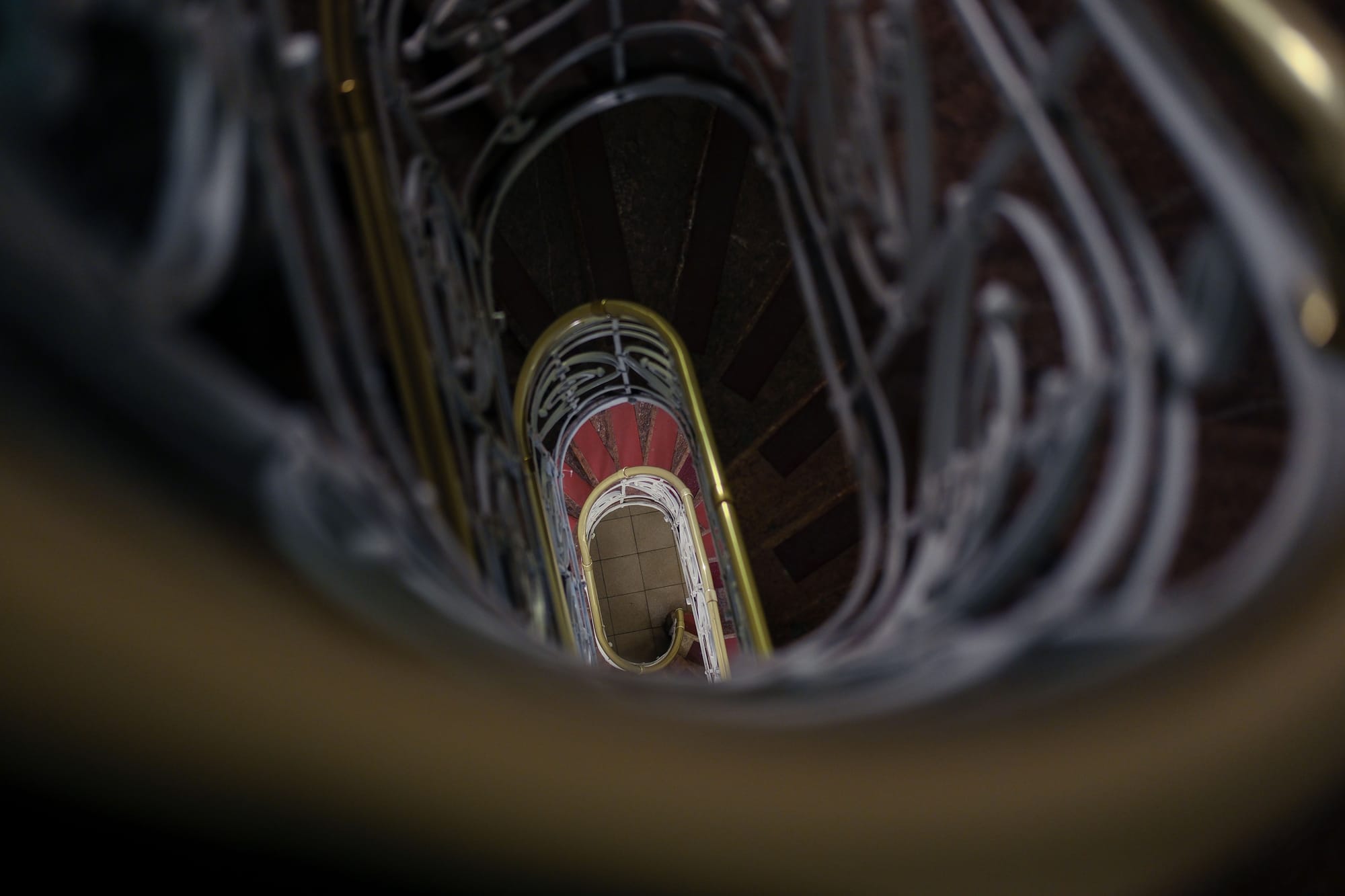
Post event, especially for more conceptual and unconventional events, organizers are left with the dilemma of how the event worked, who did the audience react, was all the work worth it given the sparse resources (on both ends including the organizers and the audience) and the enormous work put in. In general, is there a willingness to take part in cultural and specifically sonic (or AV) events in today’s Budapest? Is it something that organizers do more for themselves and for a close professional context, or is there real public interest (and capacity as in financial resources, time, etc.) for these kinds of events?
According to Sanna, “it is financially extremely difficult, I don’t understand why anyone would do something like this if not for the pure enjoyment of the final results. The equation is set up for loss: take the cost of a highly professional sound system with technicians, plus the artist fee for someone who has put years of work into their practice, plus all the event expenses from promotion to the overpriced latte you buy while meeting someone to discuss logistics; minus the number of people who are interested in this kind of experience multiplied by what they can realistically pay. The result is: you lose money. I am not even adding visuals here. If you add multisensory or AV layers, the costs multiply.
At the same time, mainstream art and tech events that involve large projections and selfie-friendly environments draw huge crowds. This shows that there is interest in AV experiences in general, but the entry points and the expectations are very different.
Looking back, I realize I made this event a bit too snobbish. I did not manage to build a bridge for people outside our niche. Yet this is always the dilemma. How do you expand an audience without lowering the quality of what the event is about?
If the only goal is to get more people to make money, then you might as well sell donuts, because everyone likes donuts. If the goal is to create a bridge between different cultural bubbles without diluting the artistic value, that is a more complex task. I may not have managed to do it this time completely, which may also be because I don’t have a team of people who think differently than me, or who can step in when I have no time and energy. So this is something I need to work on, or just ditch PAIKKA and join an existing team somewhere else”, Sanna concludes.
As a final act of Organized Noise, a radio show on Lahmacun radio will discuss about the topic of reclaiming spaces in Budapest with Lili Agg (MŰTŐ art space & collective), Daniel Ongjerth (11_11), Krisztián Puskár (UH Fest and Küss Mich), and Bettina Bence (Lahmacun radio). The show will be aired on December 3rd, 2025 at 12:00 p.m. (noon) CET.
-
Photography: Gabor Nemerov


